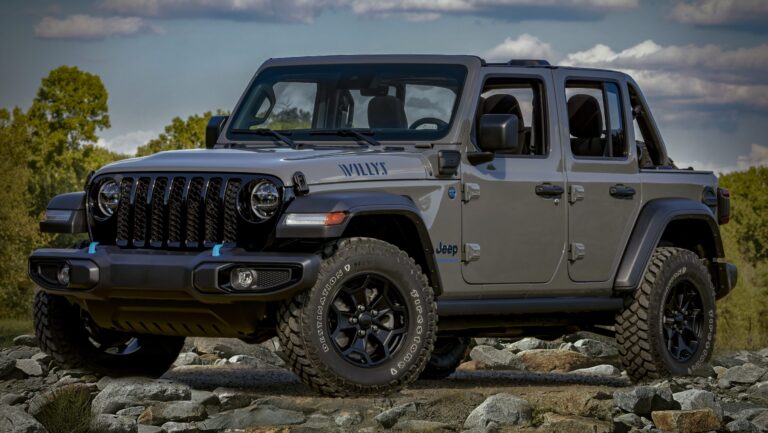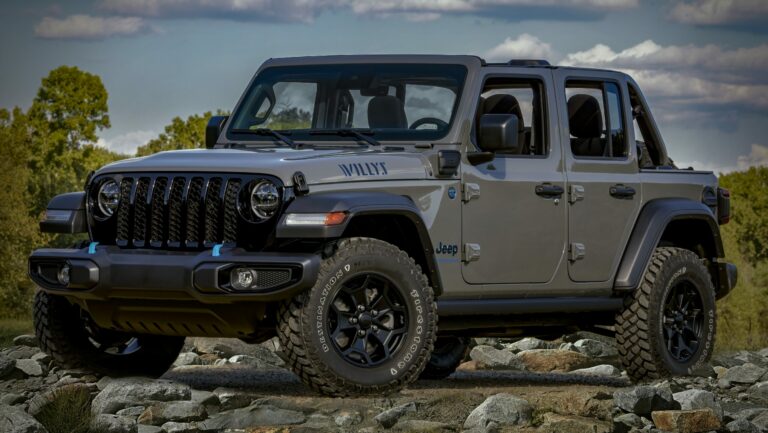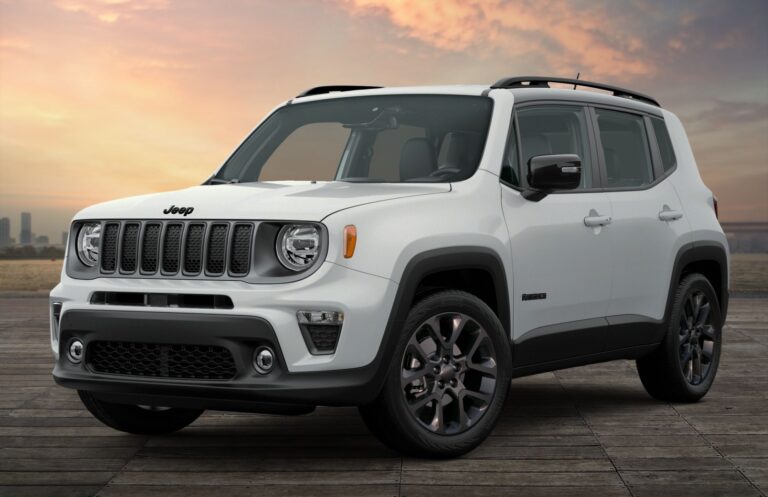1950 Willys Jeep For Sale: Your Comprehensive Guide to Owning a Legend
1950 Willys Jeep For Sale: Your Comprehensive Guide to Owning a Legend jeeps.truckstrend.com
Introduction: Embarking on a Journey with an Icon
The rumble of its L-head "Go-Devil" engine, the unmistakable silhouette, and the sheer utilitarian charm of a classic – for many, the 1950 Willys Jeep isn’t just a vehicle; it’s a tangible piece of American history, a symbol of post-war ingenuity, and an enduring testament to rugged simplicity. Born from the legendary military MB/GPW, the civilian Jeep (CJ) series quickly became an indispensable tool for farmers, adventurers, and everyday Americans alike. The 1950 model, falling squarely within the CJ-3A production run, represents a significant evolution in the civilian line, offering subtle improvements while retaining the raw, no-nonsense character that defines the Willys legacy.
1950 Willys Jeep For Sale: Your Comprehensive Guide to Owning a Legend
Today, the appeal of a 1950 Willys Jeep for sale extends far beyond its practical roots. It’s a coveted collector’s item, a capable off-road companion, and a guaranteed conversation starter wherever it goes. Whether you’re a seasoned classic car enthusiast, a budding restorer, or simply someone yearning for a slice of automotive Americana, understanding what goes into finding, evaluating, and owning one of these iconic machines is crucial. This comprehensive guide will navigate you through the fascinating world of the 1950 Willys Jeep, offering insights, practical advice, and everything you need to know before making this timeless purchase.
The Enduring Legacy of the 1950 Willys Jeep: A Brief History
To truly appreciate the 1950 Willys Jeep, one must understand its lineage. The original "Jeep" concept was a wartime necessity, leading to the development of the MB by Willys-Overland and the GPW by Ford. After World War II, Willys saw an opportunity to adapt this robust, go-anywhere vehicle for civilian use, giving birth to the CJ (Civilian Jeep) series.
The first civilian iteration, the CJ-2A (1945-1949), was an immediate success. Building on this foundation, Willys introduced the CJ-3A in 1949, and the 1950 model is a prime example of this generation. The CJ-3A brought several notable enhancements over its predecessor, most prominently a one-piece windshield that could still be folded down, improved seating comfort, and a slightly revised dashboard layout. It retained the venerable 134 cubic inch (2.9L) L-head four-cylinder engine, a robust and reliable powerplant known for its low-end torque. Coupled with a three-speed manual transmission (typically a T-90) and a two-speed transfer case (Dana 18), the CJ-3A was designed to tackle diverse terrains and tasks, from plowing fields to traversing unpaved roads. Its simple, body-on-frame construction and solid axles contributed to its legendary durability and ease of repair, qualities that continue to attract enthusiasts today. The 1950 Willys Jeep is more than just a car; it’s a testament to a simpler time when utility and ruggedness were paramount.
Why Buy a 1950 Willys Jeep Today? Benefits and Appeal
The decision to purchase a vintage vehicle is often driven by passion, and a 1950 Willys Jeep offers a unique blend of benefits that appeal to a wide range of buyers:
- Historical Significance & Nostalgia: Owning a 1950 Willys Jeep is like owning a piece of living history. It connects you to a pivotal era in American industry and culture, evoking a sense of nostalgia for a bygone age of practical, no-frills machinery.
- Unmatched Simplicity and Maintainability: Unlike modern vehicles laden with complex electronics, the Willys Jeep is a mechanical marvel of straightforward engineering. Its systems are simple, accessible, and remarkably easy for the average enthusiast to understand and work on. This translates to lower maintenance costs and the immense satisfaction of performing your own repairs.
- Surprisingly Capable Off-Road: Despite its age, the 1950 Willys Jeep, with its short wheelbase, high ground clearance, and robust 4×4 system, remains a highly capable off-road vehicle. It’s perfectly suited for trails, farm work, or simply exploring less-traveled paths.
- A Unique Driving Experience: Forget power steering, air conditioning, or advanced infotainment. Driving a 1950 Willys Jeep is a raw, unfiltered experience. You feel connected to the road (or trail) in a way modern vehicles simply cannot replicate. It’s a tactile, visceral journey that engages all your senses.
- Community and Support: The Willys Jeep community is vast, passionate, and incredibly supportive. From online forums to local clubs, you’ll find a wealth of knowledge, shared experiences, and readily available advice, making ownership a truly communal experience.
- Investment Potential: While not a guaranteed path to riches, well-maintained, original, or professionally restored 1950 Willys Jeeps have shown steady appreciation in value, making them a potentially sound investment for collectors.


What to Look For: Essential Considerations When Buying Your Willys
Purchasing a classic vehicle, especially one as utilitarian as a Willys Jeep, requires a keen eye and a thorough understanding of potential pitfalls. Here’s what to prioritize during your search:
- Rust: The Ultimate Enemy: Willys Jeeps are notorious for rust, particularly in the body tub (floorboards, hat channels, rear wheel wells), frame, and leaf spring mounts. Inspect every nook and cranny, especially under the vehicle and inside the body. Minor surface rust is manageable, but extensive rot can be a deal-breaker or lead to costly repairs.
- Engine and Drivetrain Condition: The original "Go-Devil" L-head engine is incredibly durable. Check for oil leaks, unusual noises, and signs of overheating. A compression test is highly recommended. Test the transmission (T-90) for smooth shifting in all gears, and ensure the Dana 18 transfer case engages both high and low range 4×4 without grinding. Listen for excessive play in the universal joints (U-joints) and differential gears.
- Frame Integrity: A bent or severely rusted frame can render a Jeep unsafe and uneconomical to repair. Look for straight lines, no signs of major collision damage, and solid crossmembers.
- Steering and Brakes: These are critical safety components. Check for excessive play in the steering wheel (a little is normal, a lot isn’t). Test the brakes thoroughly for effectiveness and pull. Original Willys Jeeps have drum brakes all around, which can be adequate but require regular adjustment.
- Originality vs. Modifications: Decide whether you want a historically accurate vehicle or one that has been modified for modern convenience (e.g., V8 engine swap, power steering, disc brakes). Originality often commands a higher price for collectors, while well-done modifications can enhance usability.
- Paperwork and Ensure the vehicle has a clear, transferable title that matches the VIN (if visible – older Jeeps can have VINs stamped in various places, including the frame and firewall). Verify the year and model carefully.
- Electrical System: The 6-volt electrical system is simple, but old wiring can be brittle and prone to shorts. Check all lights, gauges, and the starter. Many Jeeps have been converted to 12-volt, which offers brighter lights and easier starting, but verify the quality of the conversion.

Always, if possible, inspect the vehicle in person or arrange for a pre-purchase inspection by a mechanic familiar with vintage Jeeps.
Navigating the Market: Where to Find Your 1950 Willys Jeep
Finding the right 1950 Willys Jeep requires patience and knowing where to look:
- Online Marketplaces: Websites like eBay Motors, Craigslist, and Facebook Marketplace are popular starting points. Be wary of scams and always insist on detailed photos and communication.
- Specialized Forums & Classifieds: Websites dedicated to Willys Jeeps (e.g., G503.com, WillysTech.com, eWillys.com) often have classified sections where enthusiasts sell their vehicles. These are excellent resources as sellers and buyers are often more knowledgeable.
- Classic Car Dealerships & Auctions: While less common for everyday drivers, high-end restored or unique Willys Jeeps might appear at classic car dealerships or auctions like Mecum or Barrett-Jackson.
- Local Ads & Word of Mouth: Don’t underestimate the power of local classifieds, auto trader publications, or simply asking around at car shows or local mechanic shops. Sometimes the best deals are found off the beaten path.
Be prepared to travel or arrange for transport, as the perfect Willys might not be in your backyard.
Restoration vs. Driver: Understanding the Different Categories
When searching for a 1950 Willys Jeep, you’ll encounter a spectrum of conditions, each with its own price point and implications:
- Project/Barn Find (Price Range: $3,000 – $8,000): These are non-running, heavily rusted, or incomplete vehicles. They require a full, often frame-off, restoration. Ideal for the dedicated hobbyist with significant mechanical skills, a workshop, and a substantial budget for parts and time.
- Driver Quality (Price Range: $9,000 – $18,000): These Jeeps run, drive, and are generally roadworthy. They may have some rust, faded paint, or minor mechanical issues, but they can be enjoyed immediately. Perfect for someone who wants to experience the Willys without committing to a full restoration. They offer a good balance of usability and potential for gradual improvement.
- Partially Restored (Price Range: $15,000 – $25,000): Some major work has been done (e.g., engine rebuild, new paint, some bodywork), but the vehicle is not complete or may have shortcuts. Evaluate the quality of the work already performed to avoid inheriting someone else’s problems.
- Fully Restored/Concours (Price Range: $25,000 – $45,000+): These are meticulously restored vehicles, often to original factory specifications or better. They are show-quality and command the highest prices. While beautiful, they might be too pristine for rigorous off-road use.
- Restomod (Price Range: $20,000 – $40,000+): A growing category where a classic Willys body is combined with modern components like a more powerful engine (e.g., GM LS, Ford 302), automatic transmission, power steering, and disc brakes. These offer modern reliability and comfort within a classic shell. While not for purists, they are highly practical for regular use.
Ownership Experience: Challenges and Rewards
Owning a 1950 Willys Jeep is a unique experience, replete with both challenges and immense rewards.
Challenges:
- Lack of Modern Comforts: Be prepared for no air conditioning, no power steering, no power brakes, and a very spartan interior. Road noise is significant, and long highway journeys can be tiring.
- Slower Speeds & Safety: With a top speed typically around 45-55 mph, Willys Jeeps are not highway cruisers. Their minimal safety features (no airbags, basic seatbelts if any) mean defensive driving is paramount.
- Mechanical Aptitude Required: While simple, these vehicles require regular maintenance and an owner willing to get their hands dirty. If you’re not mechanically inclined, factor in the cost of a specialist mechanic.
- Parts Sourcing: While many common parts are reproduced, specific trim pieces or rare components might require diligent searching or fabrication.
Rewards:
- Unparalleled Driving Experience: The raw, unfiltered connection to the road is addictive.
- Conversation Starter: Be prepared to answer questions and share stories wherever you park. These Jeeps attract attention like few other vehicles.
- Pride of Ownership: There’s immense satisfaction in preserving a piece of history and keeping a vintage machine running.
- Learning Opportunity: For those new to classic cars, a Willys Jeep is an excellent platform to learn basic automotive mechanics.
- Community: Joining the Willys community offers camaraderie and invaluable support.
Practical Advice and Actionable Insights
- Set a Realistic Budget: Beyond the purchase price, account for potential repairs, restoration costs, insurance, and ongoing maintenance.
- Prioritize Safety: Regardless of condition, ensure the brakes, steering, tires, and lights are in excellent working order. Upgrade seatbelts if necessary.
- Join a Community: Before or after buying, connect with other Willys owners. Their collective wisdom is invaluable.
- Don’t Rush: Take your time researching, inspecting, and finding the right vehicle for your needs and budget.
- Insure It Properly: Obtain classic car insurance, which often offers better coverage and agreed-upon value policies at a lower cost than standard auto insurance.
- Learn Basic Maintenance: Even if you plan on professional help, understanding the basics of your Willys will save you money and enhance your ownership experience.
1950 Willys Jeep Estimated Price Guide
The price of a 1950 Willys Jeep varies significantly based on its condition, originality, and the extent of any restoration or modification. Here’s a general guide:
| Condition Category | Description | Estimated Price Range (USD) | Key Factors Affecting Price |
|---|---|---|---|
| Project/Barn Find | Non-running, significant rust, missing parts, needs full restoration. May require frame repair. | $3,000 – $8,000 | Completeness of original parts, integrity of the frame, condition of the engine block (seized vs. free), presence of a clear title. |
| Driver Quality | Runs and drives reliably, roadworthy, some rust/patina, functional but not show quality. Usable for weekend cruises and light off-roading. | $9,000 – $18,000 | Mechanical soundness (engine, transmission, transfer case, axles), overall cosmetic appeal, recent maintenance records, minor rust issues, tire condition, functional electrical system. |
| Partially Restored | Major components restored (e.g., engine rebuilt, new paint, some bodywork), but still needs significant finishing or detail work. | $15,000 – $25,000 | Quality of the restoration work completed (professional vs. DIY), remaining work needed to be roadworthy/finished, authenticity of replacement parts, overall fit and finish. |
| Fully Restored/Concours | Meticulously restored to original specifications or better. Show-quality, minimal to no flaws, highly authentic components. | $25,000 – $45,000+ | Level of detail and accuracy in restoration, use of correct OEM or NOS parts, quality of paint and bodywork, awards won at shows, historical documentation. Top-tier examples can exceed $50,000. |
| Restomod | Classic Willys body with modern engine, drivetrain, suspension, and/or comfort features. Built for usability and performance. | $20,000 – $40,000+ | Quality of modifications, specific modern components used (e.g., LS engine, custom suspension), professional build vs. DIY, overall fit and finish, perceived reliability and performance enhancements. |
Note: These are estimates and market conditions can fluctuate. Prices also depend on geographical location and seller motivation.
Frequently Asked Questions (FAQ) about the 1950 Willys Jeep
Q: Are parts readily available for a 1950 Willys Jeep?
A: Yes, many common mechanical and body parts are reproduced by specialist suppliers. While some specific trim pieces can be harder to find, the robust aftermarket and shared components across various CJ models make parts availability generally good.
Q: Can a 1950 Willys Jeep be a daily driver?
A: While technically possible, it’s generally not recommended for daily commuting, especially on modern highways. Its low top speed, lack of modern safety features, and absence of comfort amenities make it challenging for regular use. It excels as a weekend cruiser, off-road vehicle, or parade participant.
Q: What’s the top speed of a 1950 Willys Jeep?
A: A stock 1950 Willys Jeep (CJ-3A) typically has a top speed between 45-55 mph, depending on gearing, engine condition, and terrain. It’s not designed for high-speed cruising.
Q: Is it difficult to work on a Willys Jeep?
A: Compared to modern vehicles, the 1950 Willys Jeep is remarkably simple and straightforward to work on. Its mechanical systems are basic, and many repairs can be performed with standard hand tools and a basic understanding of automotive mechanics. It’s an excellent vehicle for learning about classic car maintenance.
Q: What’s the difference between a CJ-2A and a CJ-3A?
A: The primary visual difference is the windshield. The CJ-2A (1945-1949) has a two-piece, split windshield, while the CJ-3A (1949-1953, which includes the 1950 model) features a one-piece windshield that hinges at the bottom and folds down. The CJ-3A also offered slightly improved seating and a revised dashboard layout.
Q: What kind of fuel does a 1950 Willys Jeep use?
A: The "Go-Devil" L-head engine was designed for lower octane fuels common in its era. Regular unleaded gasoline (87 octane) is typically sufficient. Some owners opt for ethanol-free fuel or add a lead substitute for peace of mind, though the L-head engine is generally robust and less prone to valve seat recession than some other vintage engines.
Conclusion: Driving a Piece of Americana
The 1950 Willys Jeep is more than just a classic vehicle; it’s a testament to a bygone era of robust, no-nonsense engineering and a symbol of American resilience and ingenuity. Whether you’re drawn to its historical significance, its undeniable charm, or its legendary off-road capabilities, owning one is an immersive experience.
While the journey to finding and maintaining the perfect 1950 Willys Jeep might present its challenges, the rewards of driving a piece of living history, joining a passionate community, and experiencing automotive simplicity are immeasurable. With careful research, a thorough inspection, and a clear understanding of your goals, you can confidently navigate the market and bring home a true legend. The open-air freedom, the distinctive rumble of that L-head engine, and the countless stories these Jeeps could tell make the 1950 Willys Jeep an enduring icon, ready for its next chapter with you behind the wheel.





